Toxicity more of an issue in lower-salinity waters
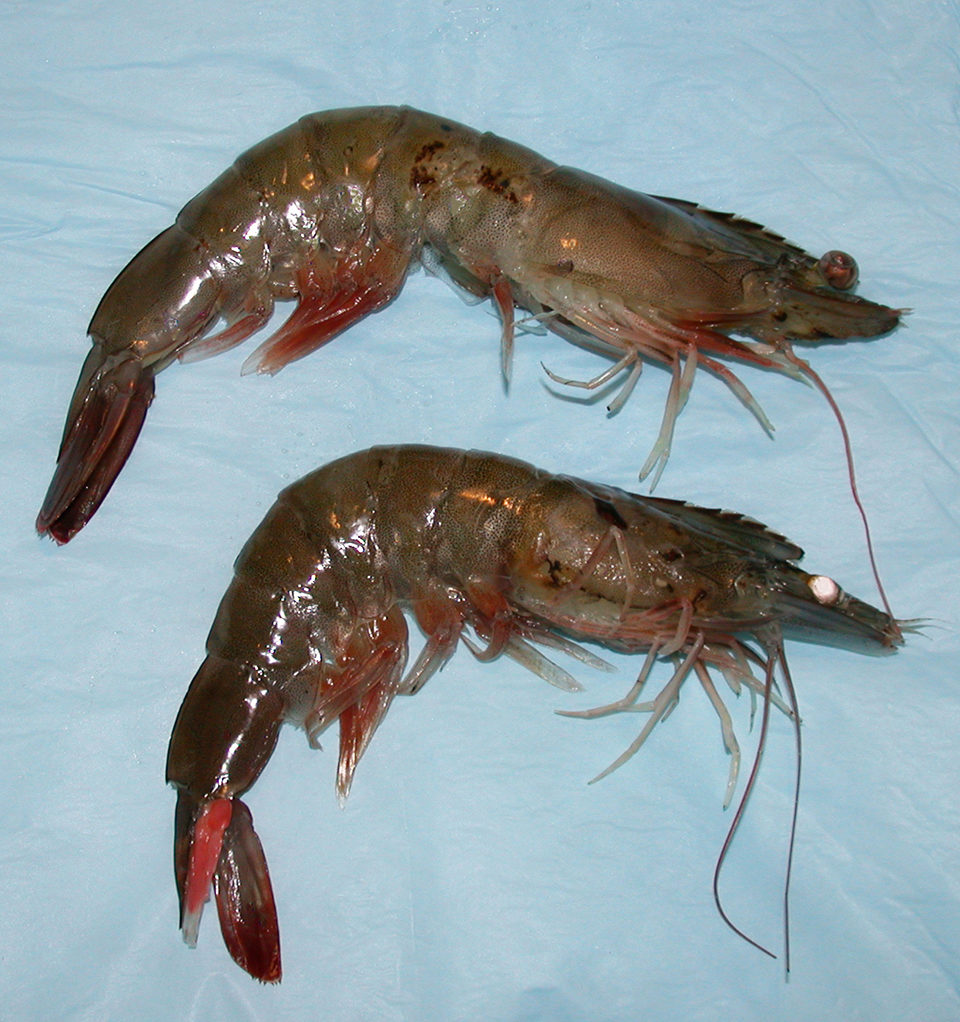
In shrimp-farming operations, one of the primary wastes of concern is nitrogen, which appears as ammonia, nitrite and nitrate. Ammonia is excreted by animals and also arises from decomposing organic solids such as uneaten feed.
This ammonia can be removed from the water directly via assimilation by heterotrophic bacteria, algae and plants. Ammonia can also be removed from ponds and aquaculture systems via nitrification. This is a two-step process performed by autotro-phic bacteria called nitrifiers. Ammonia is converted to nitrite, and nitrite is then converted to nitrate.
Compared to nitrate, both ammonia and nitrite are extremely toxic to shrimp. Ammonia and nitrite levels should remain at negligible levels in mature ponds and biofilter systems as presented in Fig. 1. Nitrate, however, will continue to accumulate, and high concentrations of nitrate are also toxic to shrimp. Standard options for reducing nitrate levels (water exchanges or denitrifying biological treatment technology) are costly and use up valuable resources.
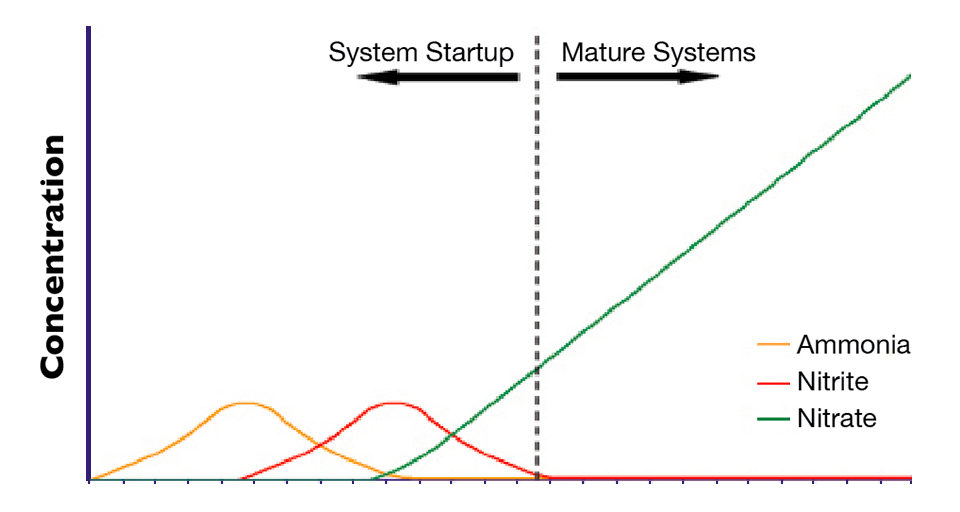
Little is known about the long-term toxic effects of nitrate to marine shrimp. Anecdotal statements are often made about what levels of nitrate are deemed safe. Some recommend keeping nitrates lower than 100 mg/L, while other operators feel comfortable exceeding 500 mg/L at their farms. To eliminate this confusion, studies were conducted by the authors to determine what concentrations had negative impacts on shrimp production over an extended period of time.
Nitrate impacts
Pacific white shrimp, Litopenaeus vannamei, were exposed to varying levels of nitrate in small-scale 150-L systems over six weeks at approximately one-third of ocean salinity (11 g/L salinity). Table 1 shows a summary of the nitrate concentration impacts on shrimp production.
Kuhn, Long-term effects of elevated concentrations, Table 1
| Average Nitrate Concentration | Final Survival | Average Final Weight of Shrimp |
|---|
Average Nitrate Concentration | Final Survival | Average Final Weight of Shrimp |
|---|---|---|
| 35 mg/L | 87% | 9.3 g |
| 220 mg/L | 87% | 8.7 g |
| 435 mg/L | 64% | 7.5 g |
| 910 mg/L | 15% | 5.0 g |
No statistical differences were observed for survival or growth of shrimp exposed to 35-220 mg/L nitrate. However, above 220 mg of nitrate, shrimp survival and growth were significantly impacted. Shrimp exposed to the maximum nitrate load of 910 mg/L did extremely poorly. Several possibilities may explain the suppression of growth and increased mortalities observed, including reduced feeding efficiencies, metabolic depression and impaired endocrine function.
Salinity and nitrate
Additional nitrate exposure experiments were conducted over a wide range of salinities from brackish water to half-strength seawater (2-18 g/L salinity). Shrimp production was significantly compromised in the lowest salinity group.
This study showed that nitrate toxicity is more of an issue for shrimp producers who are raising shrimp in lower-salinity waters approaching freshwater conditions. At lower salinities, shrimp have to put significant energy into regulating their osmotic pressure levels to compensate for the reduced saline environment. This is a stress to them, so when additional stress in the form of high nitrate levels is introduced, the shrimp cannot handle it well.
Health impacts
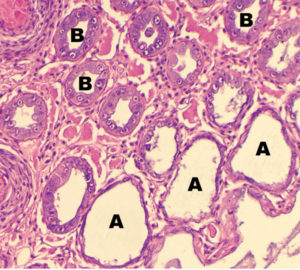
The easiest way to determine the toxic effects of nitrate on shrimp is to look at shrimp production numbers such as survival and growth. Aquaculturists interested in preserving the health of their stocks can also evaluate other physiological attributes, such as antennae, gills and the hepatopancreas.
Shrimp exposed to high concentrations of nitrate over a long period of time exhibited shorter antennae length, gill abnormalities and lesions in the hepatopancreas. Short antennae and gill abnormalities are often considered early clinical signs of decreasing shrimp health.
The hepatopancreas organs in shrimp produce digestive enzymes and are responsible for promoting the normal absorption of digested food. One type of lesion observed in shrimp exposed to elevated levels of nitrate is shown in Fig. 2. These cells were dilated and devoid of epithelial membranes, probably a consequence of not eating well or not metabolizing feed normally.
In addition to affecting the health of the animals, physical and biological changes can result in the shrimp having a reduced market acceptance, which results in reduced profitability for a producer.
Perspectives
It is important to consider pushing the limits of nitrates when considering water and resource conservation. However, it is also important to not compromise shrimp health or production.
This trial suggested caution should be used when considering raising shrimp in waters that contain nitrate levels exceeding 220 mg/L. In addition, marine shrimp raised in very low salinities exhibit a reduced tolerance to nitrate. It is hoped this information will provide aquaculturists information to help them make managerial decisions regarding the balance between resource conservation and nitrate control.
(Editor’s Note: This article was originally published in the November/December 2011 print edition of the Global Aquaculture Advocate.)
Now that you've reached the end of the article ...
… please consider supporting GSA’s mission to advance responsible seafood practices through education, advocacy and third-party assurances. The Advocate aims to document the evolution of responsible seafood practices and share the expansive knowledge of our vast network of contributors.
By becoming a Global Seafood Alliance member, you’re ensuring that all of the pre-competitive work we do through member benefits, resources and events can continue. Individual membership costs just $50 a year.
Not a GSA member? Join us.
Authors
-

David D. Kuhn, Ph.D.
Department of Food Science and Technology
Virginia Tech
Blacksburg, Virginia 24061 USA -
Stephen A. Smith, DVM, Ph.D.
Department of Biomedical Sciences and Pathology
Virginia-Maryland Regional College of Veterinary Medicine
Virginia Tech
Blacksburg, Virginia, USA -

George J. Flick, Jr., Ph.D.
Department of Food Science and Technology
Virginia Tech
Blacksburg, Virginia, USA
Related Posts
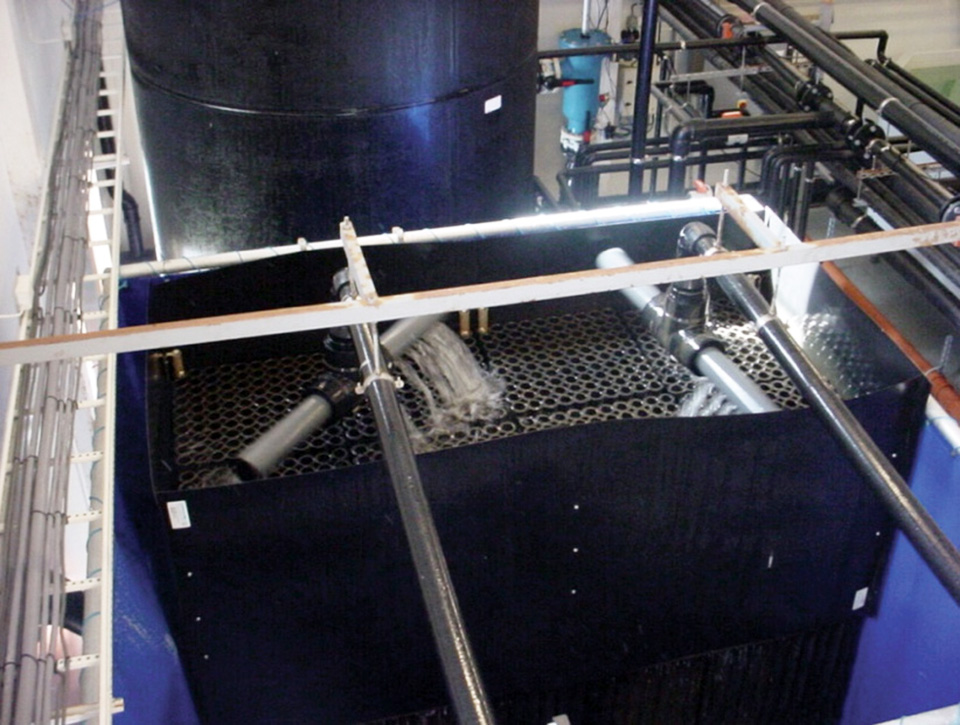
Innovation & Investment
A review of unit processes in RAS systems
Since un-ionized ammonia-nitrogen and nitrite-nitrogen are toxic to most finfish, controlling their concentrations in culture tanks is a primary objective in the design of recirculating aquaculture systems.
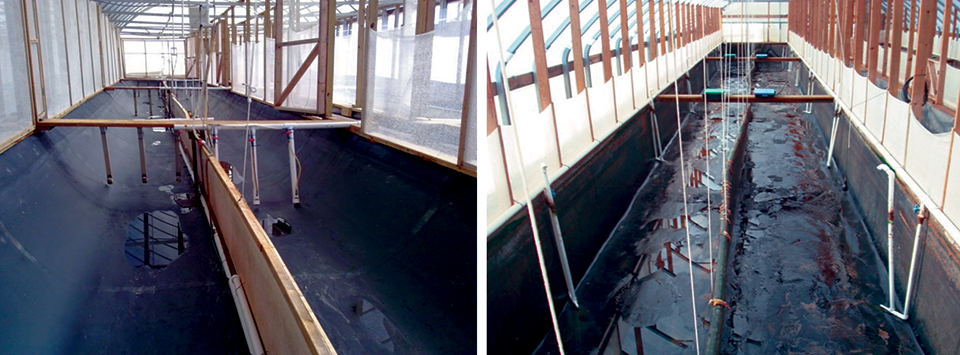
Responsibility
Advances in super-intensive, zero-exchange shrimp raceways
Research at the Texas AgriLife Research Mariculture Laboratory is investigating ways to improve the economic viability of super-intensive raceways for shrimp production.
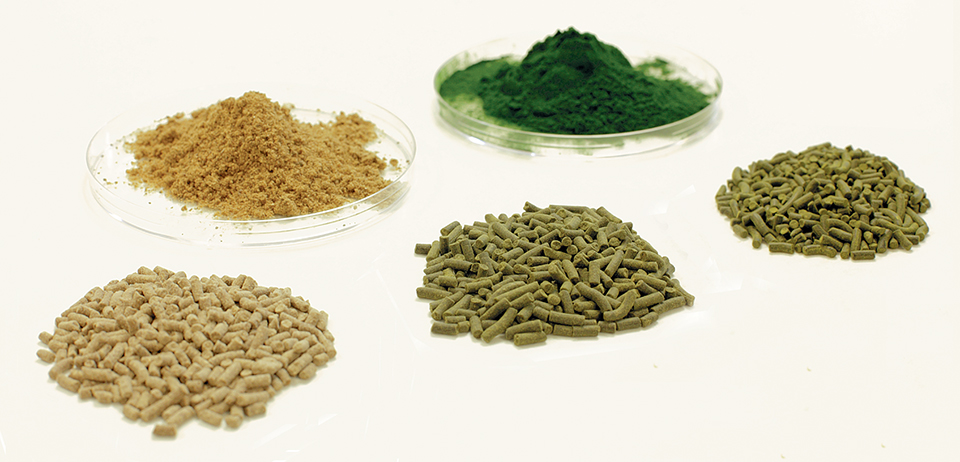
Aquafeeds
Algae alternative: Chlorella studied as protein source in tilapia feeds
Chlorella and other species have potential as protein sources in aquafeeds. In trials with tilapia fry raised in a recirculating system, the fish received a fishmeal-based control diet or feeds with portions of the fishmeal replaced by Chlorella.
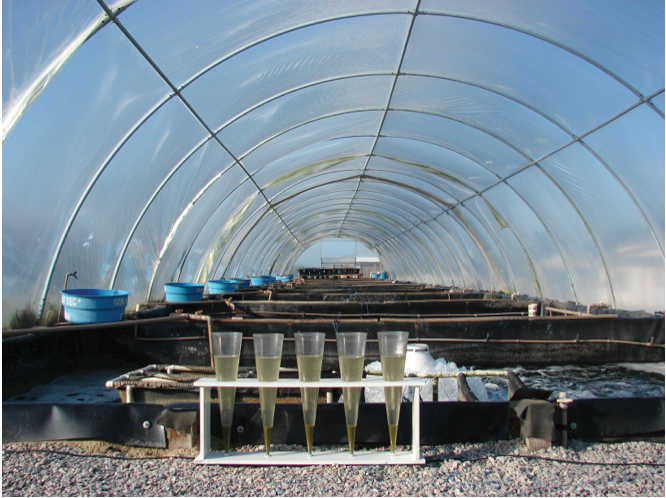
Health & Welfare
Ammonia addition enhances microbial flocs in nursery phase for Pacific white shrimp
In a study, “pre-fertilization” in the nursery phase of a biofloc system for shrimp was tested. The objective was to accelerate the biofloc formation to minimize ammonia concentrations, avoiding high peaks during culture.



